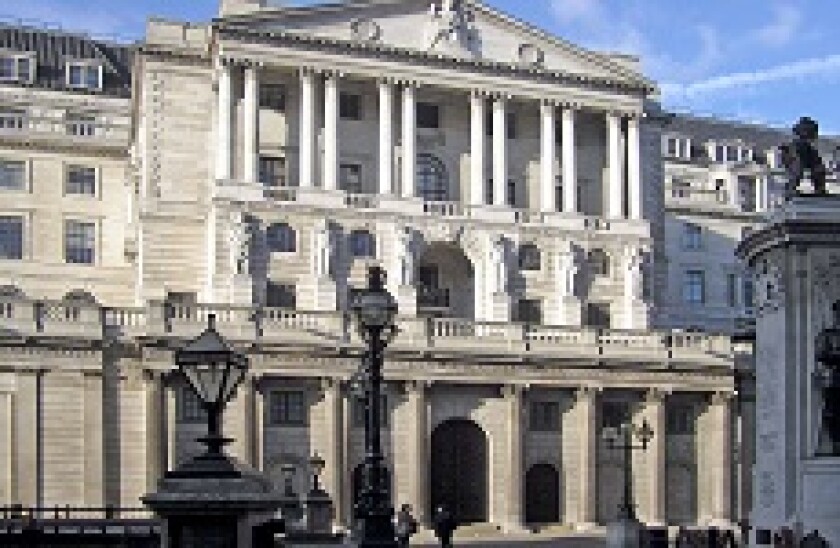What follows is undoubtedly on the wrong side of history. Libor, and the attempted manipulation thereof, has become a universal villain, a pantomime grotesque and a symbol of absolutely everything wrong with the banking industry.
Keyboard warriors who couldn’t tell fixed from floating if their life depended on it feel confident arguing that the scandal exposes the criminality of banks. Respected financial journalists publish books describing it as “one of the greatest scams in financial history”. In 10 years time, this piece will probably go down about as well as a Ken Livingstone interview.
But, here’s the thing: if the Bank of England put pressure on Barclays to lower its Libor submissions in October 2008, it was absolutely right to do so and acting in accordance with its overriding duties to keep the UK financial system functioning.
Any responsible figure would have done the same, though HM Government is stoutly insisting otherwise with Downing Street saying, in response to the tapes, that “any manipulation of Libor was wrong”.
By 2008, Libor was used for far more tasks than it was designed for. Intended to set the pricing of new issue loans — by making visible a notional fair, generic bank funding cost — it had also become the de facto risk-free rate for floating interest rates, as well as a basis for the fixed rate risk-free rate through the swap curve.
In October 2008, major corporate borrowers could see it was no longer serving this loan-based purpose.
Bankers and traders had come to view Libor and its offshoots as a risk-free rate because the interbank market, from which Libor was supposed to be derived, had been largely benign in the years since it was invented.
There were plenty of financial crises, from the Tequila crisis to Savings and Loans, the Russian default, Long Term Capital Management, the dot-com bust and the rest, but the sort of shock and freeze that occurred in 2008, imperilling the world’s largest banks, was unparalleled by anything since the first months of World War One.
Interrupting this role would have caused chaos — and new issue loan borrowers, the original intended users of Libor, were already finding their way around it. Nestle and Nokia, in the weeks between the collapse of Lehman and the Bank of England’s pressure on Barclays, dated to October 29, launched loans linked to their own CDS spreads, rather than the usual Euribor plus margin structure.
Do panic
The main point, though, is that financial panic causes more panic.
Even something mild, like the recent chance that Deutsche Bank wouldn’t pay coupons on its additional tier one debt, can close a market and cause turmoil. So what level of fear would take hold when the whole system looked to be scuppered?
Central bankers have known this for centuries. The Bank of England’s original “discount window”, which provided short term secured liquidity on terms tougher than the market, was originally a physical window — and one located away from the rest of the Bank’s operational infrastructure.
The reason for this was that, if other City grandees were to see one of their competitors at the discount window, it would spread rumour and worry about the solvency of their firm. At a time when a gentleman’s word was his bond, this could shut the firm out of the ordinary interbank market, or from other sources of finance, creating a self-fulfilling prophecy and pushing the institution into insolvency. A classic liquidity run, in other words.
There was no shortage of financial fear in late October 2008, and there were plenty of other financial indices displaying it loud and clear.
If you’d been in a cave and missed the collapse of Lehman Brothers two weeks earlier, a quick look at bank equities and CDS spreads would have helped to clarify matters. The market was looking for more blood and knew perfectly well that banks were paying up to borrow money.
With worry all around, perhaps a high Libor print from Barclays would have made no difference (though, if there was no real interbank market in size at all, would a higher print have been truthful, or simply less false?).
But perhaps it would. In the febrile atmosphere of October 2008, why gamble on Libor making no difference? Any gamble at this point on the health of another British institution would have to take into account the £500bn of public money and guarantees committed to rescuing UK banks on October 8.
Most pointedly, this included a £100bn guarantee for short term interbank lending, and the ill-starred £6.5bn Qatari recap for Barclays. Both of these had been announced, though the recap had not closed.
So a high Libor print would not have been an admission of panic — there was plenty of that around already — but it would have been an admission that the fixes for the interbank market and the recaps of other institutions had not worked and had failed to restore confidence in the UK financial system.
With that downside in mind, and the upside being “the integrity of the Libor system”, already considered a joke by money market traders and FRN borrowers alike, what would you have done if you were at the Bank of England? Would you have urged a low Libor print, or would you roll the dice?

